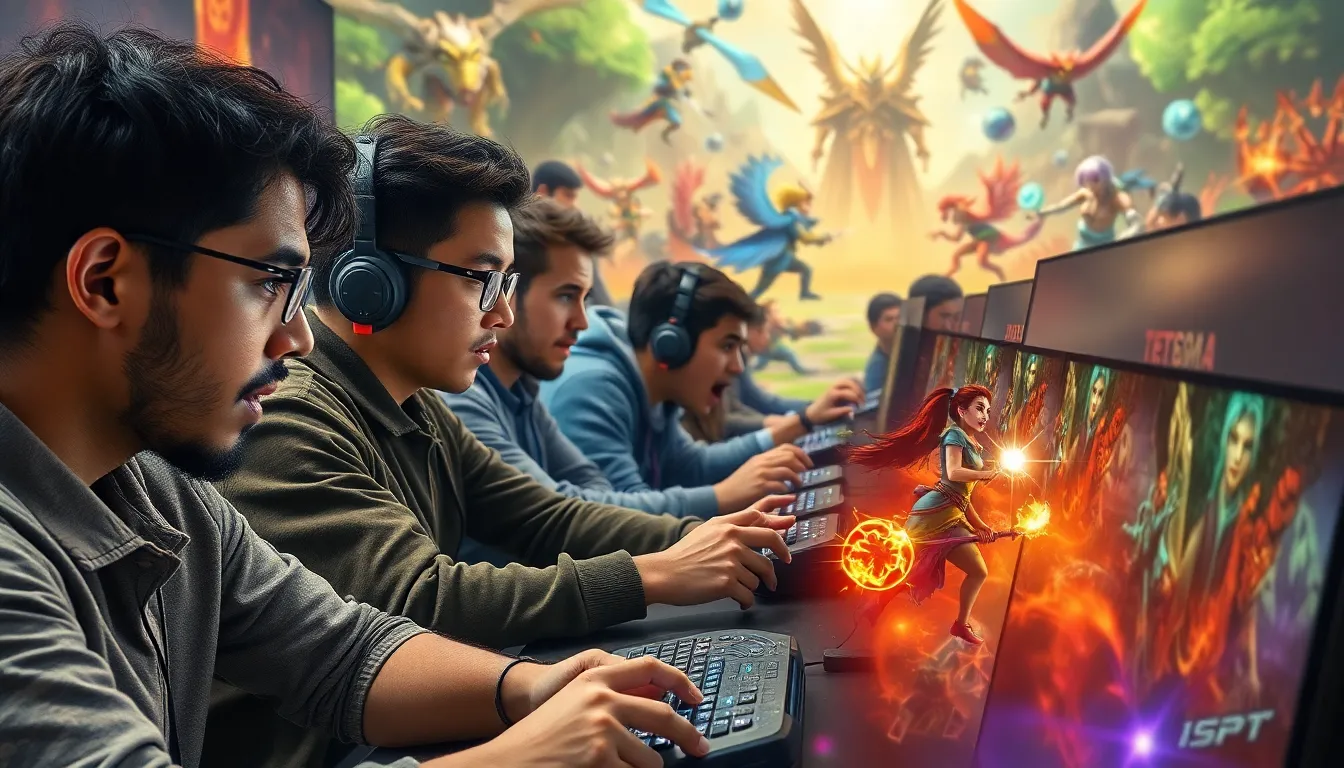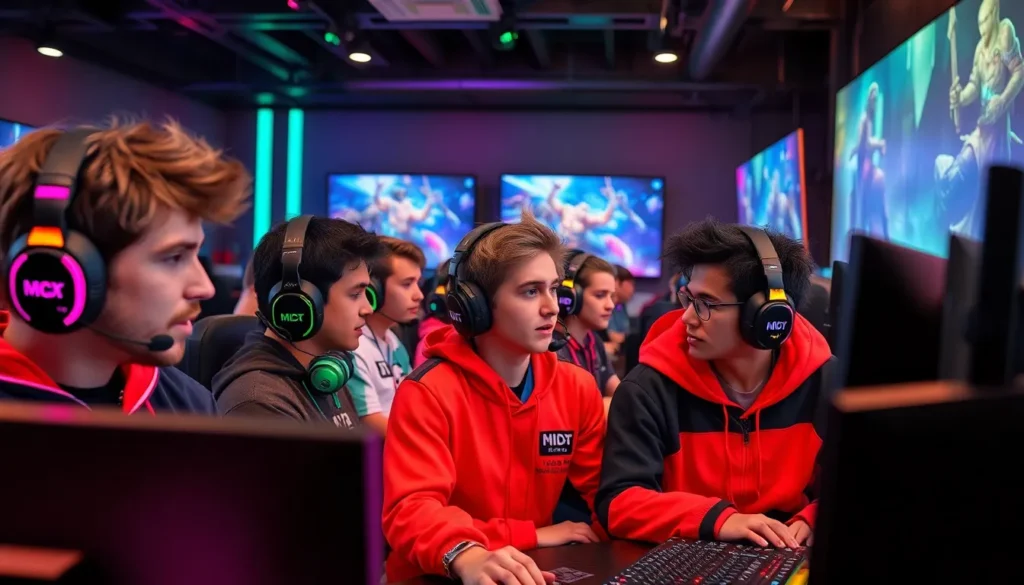Table of Contents
ToggleThe gaming landscape has evolved dramatically, blending genres to create immersive experiences that captivate players. One of the most exciting developments is the fusion of Multiplayer Online Battle Arenas (MOBAs) and Massively Multiplayer Online Role-Playing Games (MMORPGs). This hybrid genre combines the strategic, fast-paced action of MOBAs with the expansive worlds and character progression typical of MMORPGs, offering gamers a unique and engaging way to interact.
In this dynamic environment, players can dive into rich narratives while engaging in thrilling team-based battles. They can customize their heroes, develop skills, and explore vast landscapes, all while collaborating with friends or competing against rivals. As the popularity of MOBA MMORPGs continues to rise, understanding what makes them tick becomes essential for both avid gamers and newcomers alike.
Overview of MOBA MMORPG
MOBA MMORPGs combine elements from both genres, offering players dynamic gameplay and deep immersion. These games typically feature diverse character choices, each possessing unique abilities and skills. Character customization plays a crucial role, allowing players to tailor heroes to fit their strategic preferences.
Players interact in persistent game worlds, crafting rich narratives that enhance engagement. Cooperative and competitive play styles coexist, encouraging teamwork in objectives or rivalry in battles. The social aspects enriched through guilds and community events contribute to player retention and involvement.
The genre’s mechanics emphasize skill-based combat, positioning, and timing. Players develop strategies that can change the tide of a match, highlighting the importance of teamwork. Regular updates and expansions ensure that gameplay remains fresh, continuously attracting new and returning players.
Many titles within this genre operate on a free-to-play model, supported through microtransactions for cosmetic items and game enhancements. This approach broadens accessibility while offering players avenues for monetization.
Key Features of MOBA MMORPG

MOBA MMORPGs blend distinct gaming elements, creating engaging gameplay through unique mechanics and character development. Players experience diverse interactions and strategies within expansive virtual worlds.
Gameplay Mechanics
Gameplay mechanics in MOBA MMORPGs focus on strategic team-based battles. Players control characters with distinct abilities, necessitating skillful execution in combat scenarios. Key mechanics include:
- Real-time strategy: Players execute tactics on the fly, adapting to opponents and changing battlefield dynamics.
- Positioning: Character placement influences effectiveness in battles, making positioning vital for success.
- Skill-based combat: Mastery of abilities and timing affects outcomes, rewarding practice and engagement.
- Team synergy: Collaboration between team members enhances performance, demanding communication and coordination.
Effective usage of these mechanics fosters intense competition, as players strategize against opponents while optimizing their character’s strengths.
Character Development
Character development in MOBA MMORPGs adds depth to gameplay. Players create and personalize heroes through several systems, including:
- Skill trees: Characters can evolve through skill trees, allowing players to choose paths that enhance preferred play styles.
- Customization options: Visual alterations and gear selection ensure unique character identity while enhancing gameplay effectiveness.
- Level progression: As players participate in battles, characters gain experience points, unlocking new abilities and increasing power levels.
- In-game economy: Players engage in resource management, acquiring equipment or upgrades, which impacts overall performance.
These character development features promote long-term engagement, allowing players to invest time in their heroes while shaping diverse gameplay experiences.
Popular MOBA MMORPG Titles
Several titles exemplify the hybrid nature of MOBA MMORPGs, each offering unique gameplay experiences and features. Below are notable games in this genre.
Game 1: Overview and Unique Aspects
“Blade & Soul” is a popular MOBA MMORPG known for its stunning visuals and martial arts-inspired combat system. Players choose from distinct classes, each with unique skills and playstyles. The game features a storyline rich in Eastern mythology, with immersive quests and dynamic environments. Its engaging PvP system encourages strategic teamwork, making each battle unpredictable. Regular updates introduce new content, ensuring ongoing player engagement.
Game 2: Overview and Unique Aspects
“Amazon’s New World” blends traditional MMORPG mechanics with MOBA elements. Set in a mystical world, players partake in faction-based wars and territory control. The class system allows for extensive customization, accommodating diverse play styles. The game’s real-time combat includes tactical positioning and environmental interaction. This title emphasizes exploration and crafting, with a robust economy sustained by player interactions.
Game 3: Overview and Unique Aspects
“Albion Online” stands out with its sandbox approach, combining MOBA and MMORPG features. Players can freely choose their roles through a unique class flexibility system. The game incorporates player-driven economy mechanics, allowing for resource gathering and crafting. PvE and PvP content coexist, promoting competitive play while encouraging cooperation within guilds. Its cross-platform capability expands accessibility, reaching a broader audience.
Community and Competitive Scene
The community surrounding MOBA MMORPGs plays a vital role in their ongoing success and longevity. Players collaborate and communicate through forums, social media, and in-game chat systems. These platforms foster engagement, encouraging players to share strategies, discuss gameplay mechanics, and participate in community events. Enthusiastic fan bases often rally around particular titles, creating an environment that thrives on mutual support and shared interests.
Competitive scenes in MOBA MMORPGs attract professional players and teams, driven by tournaments and eSports events. High-stakes competitions, such as the League of Legends World Championship and Dota 2’s The International, showcase skillful gameplay and strategic depth. These events not only offer substantial cash prizes but also fuel community excitement, inspiring aspiring players to improve their skills.
Teams often form through in-game clans or guilds, allowing for organized play and collaboration. Players can engage in ranked matches and structured competitions, providing motivation to climb the competitive ladder. Leaderboards track performance and achievements, creating a sense of accomplishment that keeps players invested.
Several MOBA MMORPGs host seasonal events and challenges that promote participation and revitalize the community. These events typically introduce limited-time modes or unique rewards, encouraging players to log in regularly. Developers frequently gather community feedback to enhance the gaming experience, ensuring that player input shapes future updates and expansions.
The combination of a vibrant community and an active competitive scene solidifies the position of MOBA MMORPGs in the gaming landscape, making them appealing to both casual and competitive players.
The rise of MOBA MMORPGs marks a significant shift in the gaming landscape. By merging strategic gameplay with expansive worlds these games offer players unique experiences that cater to various play styles. The blend of character customization and immersive narratives not only enhances player engagement but also fosters a sense of community.
As this genre continues to evolve it attracts both seasoned gamers and newcomers alike. The vibrant competitive scenes and regular updates keep the gameplay fresh ensuring that players remain invested. With a diverse array of titles available players have ample opportunities to explore and enjoy the dynamic nature of MOBA MMORPGs.







